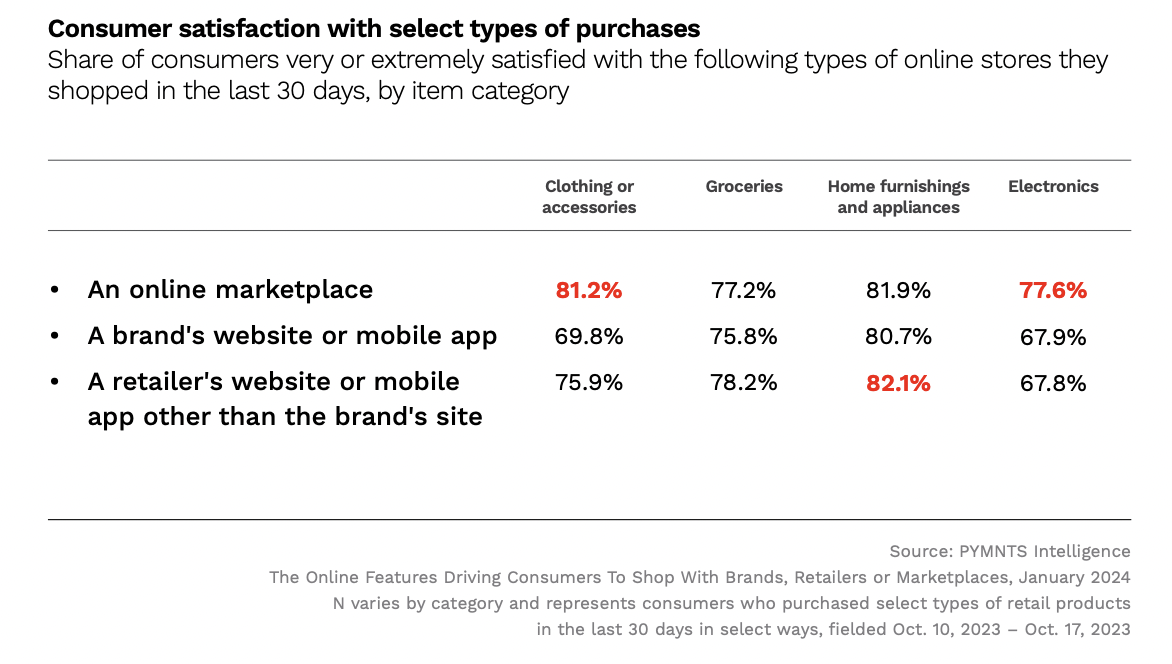
When it comes to online marketplaces, grocery-focused platforms lag behind other industries in terms of providing a positive customer experience.

The new PYMNTS Intelligence report “The Online Features Driving Consumers to Shop With Brands, Retailers or Marketplaces” drew from a survey of more than 3,500 U.S. consumers to understand their actions, choices and behaviors in online shopping.
The results revealed that while 77% of grocery shoppers are very or extremely satisfied with their experiences on online marketplaces, this share still lags behind other categories. Eighty-one percent of consumers reported being very or extremely satisfied with their clothing or accessory shopping experiences on online marketplaces, 82% for home furnishings and appliances, and 78% for electronics.
Even some players in the grocery marketplace space are discussing the room for improvement in the category. For instance, DoorDash CEO Tony Xu said in September at Goldman Sachs’ Communacopia + Technology Conference that consumers think grocery delivery is “worse than the physical experience of buying your own” products in stores, adding that out-of-stocks and insufficient replacements hamper the experience and observing that “there is still a long ways to go.”
Yet Instacart maintains that it can provide consumers with a positive shopping experience — one that, with its years of experience in grocery, its restaurant aggregator competitors struggle to match.
“Our strengths are evident across our business, the breadth and depth of our retailer integrations, the quality of the experience and accuracy of our order, the size of our baskets, the increased order frequency and spend from our customers over time, not to mention our healthy unit economics,” Instacart CEO Fidji Simo stated on the company’s last earnings call. “We have a massive head start, and we are getting better every single day with every order.